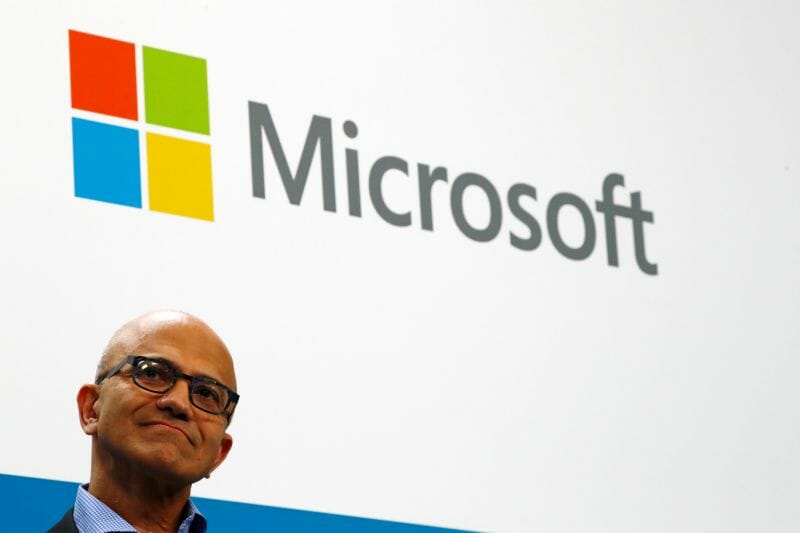It’s quarterly earnings time for Microsoft and Amazon. That means it’s also time for the media to continue telling you that although Microsoft’s cloud revenue is 25% larger than Amazon’s, Amazon is somehow the “runaway” leader in the cloud.
First, some facts. And then we’ll explore the fantasies around this utterly bizarre infatuation that most in the media, along with many “expert” analysts, continue to have with Amazon’s AWS cloud unit.
Fact: For the 3 months ended Dec. 31, 2019, Microsoft had cloud revenue of $12.5 billion, and Amazon had cloud revenue of $9.95 billion.
Fact: For those same 3 months, Microsoft’s cloud revenue was 25% greater than Amazon’s cloud revenue.
Fact: For calendar 2019, Microsoft’s cloud revenue was $44.7 billion, and Amazon’s cloud revenue was $35 billion.
Fact: For calendar 2019, Microsoft’s cloud revenue was 27.7% higher than Amazon’s cloud revenue.
Guess: I’m projecting that for the 3 months ended March 31, 2020, both companies’ cloud businesses will show some very solid growth but also a significant impact from COVID-19 with lower-than-normal growth rates. I’m guessing that Microsoft’s cloud revenue for that 3-month period (which is Microsoft’s fiscal Q3) will be $12.7 billion, up 32%. And I’m guessing that Amazon’s cloud revenue for that period will be $9.93 billion, up 29%.
Those projections reflect that Microsoft’s cloud revenue would be 27.9% higher than Amazon’s for the first quarter—but again, that’s a purely hypothetical projection. We will get to see what the actual calendar-Q1 numbers are when Microsoft releases its earnings on April 29 and Amazon discloses financial results on April 30. Plus, Google Cloud’s numbers will be out when Alphabet discloses on April 28.
Cloud Wars
Top 10 Rankings — Apr. 27, 2020
| 1. Microsoft — Bogus “775% surge” went from fake news to lame fix—very surprising |
| 2. Amazon — Big donation of services to researchers for current and future crises |
| 3. Salesforce — Check out Marc Benioff: Extraordinary Ascendancy of a Global Leader |
| 4. Google — Kurian shares a massive, wide-ranging global response to COVID-19 |
| 5. SAP — As co-CEO Morgan leaves, SAP, Oracle, Salesforce agree: co-CEO model dead |
| 6. Oracle — New world: Larry Ellison makes Youtube video praising customer Zoom |
| 7. IBM — New CEO Krishna lays out strategy to beat Microsoft, Amazon, Google |
| 8. Workday — Bhusri doubles down on commitment to employees as crisis intensifies |
| 9. ServiceNow — McDermott sees ‘no layoffs’ and raises: hiring 1,000+ in 2020 |
| 10. Adobe — Digital Experience business up 24% to $859M in Q4 |
Fantasy: In spite of all of those publicly available and unambiguous numbers, the media will still proclaim—for reasons only they can fathom—Amazon as the runaway leader in the cloud. Here’s a Wall Street Journal headline from Jan. 4 of this year: Amazon Has Long Ruled the Cloud. Now It Must Fend Off Rivals.
Fantasy: In early February, a TechCrunch headline proclaimed, Even as Microsoft Azure revenue grows, AWS’s market share lead stays strong. The accompanying article dove even farther into fantasyland with these statements:
- “Microsoft is miles behind the cloud leader” (AWS);
- Microsoft is “still struggling to gain meaningful ground on AWS’s lead”;
- “This has to be frustrating to Microsoft CEO Satya Nadella”; and
- Nadella’s “done everything right to get his company to this point, but sometimes the math just isn’t in your favor.” (For more on this, please see AWS Thrashing Microsoft, Says TechCrunch—But Revenue Numbers Tell Opposite Story.)
Fantasy: While at least offering some qualifications about which company might be #1, ZDnet went with the conventional myth in early February: Top cloud providers in 2020: AWS, Microsoft Azure, and Google Cloud, hybrid, SaaS players.
Fantasy-busting: There’s no question that Amazon’s AWS is the category king in public-cloud IaaS. It did more than any other tech vendor in the early days to put cloud computing on the map. AWS continues to do a superb job in all facets of is business. It deserves great praise for all it has accomplished in the past and continues to achieve in the present. By all indications, it continues to be the unquestioned big dog in IaaS.
But the cloud is much more than IaaS, and to discount the revenue contributions from PaaS and SaaS as not being “real cloud” is silly, arbitrary, short-sighted and simply inaccurate.
However, some research firms—notably Synergy—have done a great job of pumping out snazzy quarterly IaaS market-share-leader reports. And the media jumps on those like a hungry dog on a pound of ground beef. But in their feeding frenzy, they conflate “IaaS” with the cloud overall, and erroneously project AWS to be the king of the overall cloud.
And that just ain’t so.
In many ways, I couldn’t possibly care less what the media do or say about any subject. But in this specific case of which company is currently ruling the cloud, I choose to take this contrarian stand because the general public has a right to know what is really and truly going on in the cloud and who the current leader is. Those businesses are staking many hundreds of billions of dollars on the cloud market. They deserve to be getting the unvarnished truth.
And the truth is that Amazon/AWS, for all of its enormous capabilities and achievements and performance, is not #1 in the cloud. It is #2.
#1 is Microsoft.
RECOMMENDED READING
Microsoft Blows Away Amazon in 2019 Cloud Revenue: 30% Bigger
Amazon’s Worst Nightmare Comes True: Microsoft Azure #1 among CIOs
Why Microsoft and Not Amazon Is #1 in Cloud: Migrations Are 5X Cheaper
Microsoft-Oracle Shocker: Customers Win as #1 and #6 Vendors Pair Up
#1 Microsoft Puts Amazon and Google on Notice: We’re Just Getting Started
AWS Thrashing Microsoft, Says TechCrunch—But Revenue Numbers Tell Opposite Story
Inside Microsoft’s Monster Q4: 10 Big Cloud Numbers
Microsoft Torches Google and Amazon on Big-Data Benchmarks, Says Microsoft
If #1 Microsoft Isn’t “Real” Cloud, Why Are World’s Largest Companies Buying It?
Subscribe to the Cloud Wars Newsletter for in-depth analysis of the major cloud vendors from the perspective of business customers. It’s free, it’s exclusive and it’s great!









